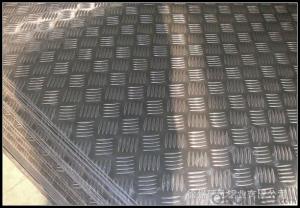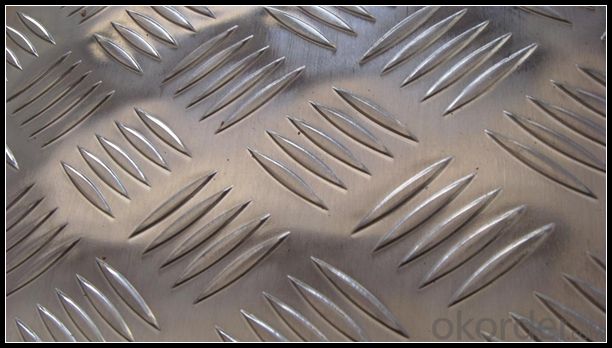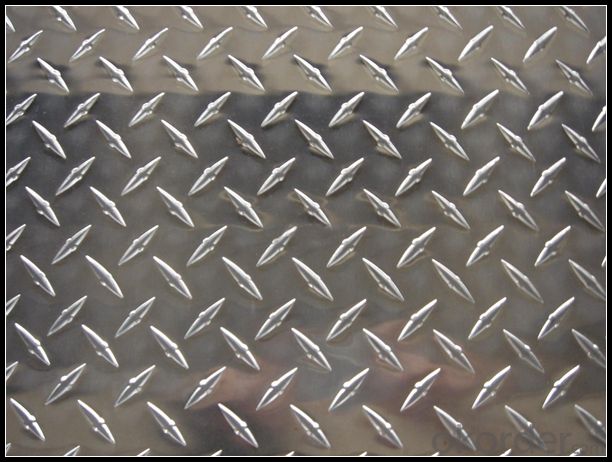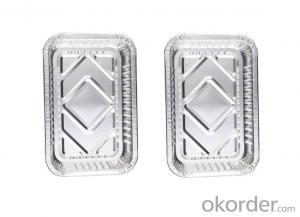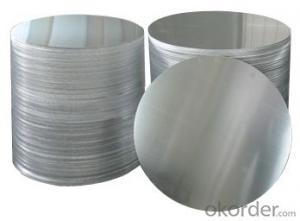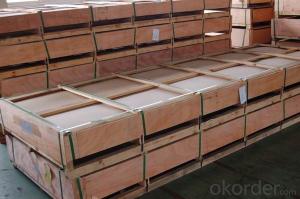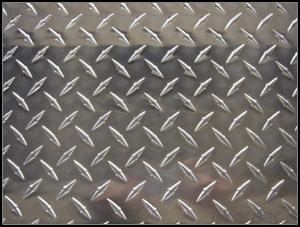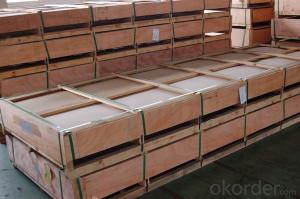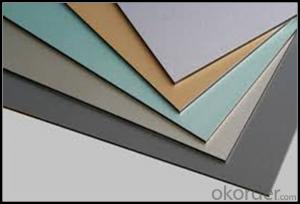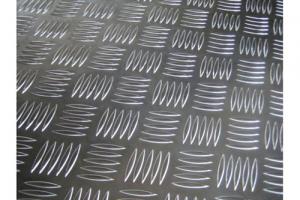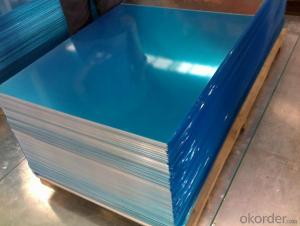30 X 37 Aluminum Sheets for Sale - EN AW-3105 Aluminium Treadplate for Building
- Loading Port:
- Shanghai
- Payment Terms:
- TT OR LC
- Min Order Qty:
- 5 m.t.
- Supply Capability:
- 1000 m.t./month
OKorder Service Pledge
OKorder Financial Service
You Might Also Like
Specification
1. Structure of EN AW - 3105 Aluminium Treadplate for Building Description
EN AW - 3105 Aluminium Treadplate for Building is one semi-finished aluminium material. The alloy AA3105 is widly used in building, industry ect. Its weight is much lower than steel. So many customers choosed aluminium material instead of steel.
2. Specification of EN AW - 3105 Aluminium Treadplate for Building
EN AW - 3105 Aluminium Treadplate for Building | |
Main Specification | |
Alloy | AA1xxx (AA1050, AA1060, AA1070, AA1100 etc.) |
AA3xxx (AA3003, AA3004, AA3005, AA3105 etc.) | |
AA5xxx, AA6XXX (AA5052,AA5083, AA5754, AA6061, AA6062 etc.) | |
AA8xxx(AA8011, AA8006 etc.) | |
Temper | H14,H16, H18, H22, H24, H26, H32,O/F, T4, T6, T651 |
Thickmess | 0.01mm-100mm |
Width | 30mm-1700mm |
Standard | GB/T 3880-2006/ASTM |
Special specification is available on customer's requirement | |
3. Application of EN AW - 3105 Aluminium Treadplate for Building
(1).Interior: wall cladding, ceilings, bathrooms, kitchens and balconies, shutters, doors...
(2).Exterior: wall cladding, facades, roofing, canopies, tunnels,column covers , renovations...
(3).Advertisement: display platforms, signboards, fascia, shop fronts...
4. Feature of EN AW - 3105 Aluminium Treadplate for Building
Surfact Quality :
Be free from Oil Stain, Dent, Inclusion, Scratches, Stain, Oxide Dicoloration, Breaks, Corrosion, Roll Marks, Dirt Streaks and other defect which will interfere with use,
Mechenical Property:
Chemical Composite and Mechanical Property
5. Certificate of EN AW - 3105 Aluminium Treadplate for Building
SGS and ROHS(if client request, paid by client), MTC(plant provided), Certificate of Origin(FORM A, FORM E, CO), Bureau Veritas and SGS (if client request, paid by client), CIQS certificate
6. Image of EN AW - 3105 Aluminium Treadplate for Building
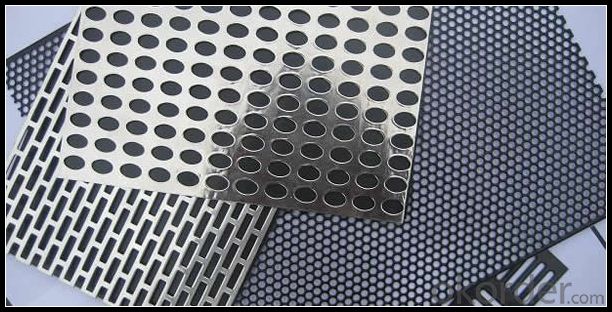
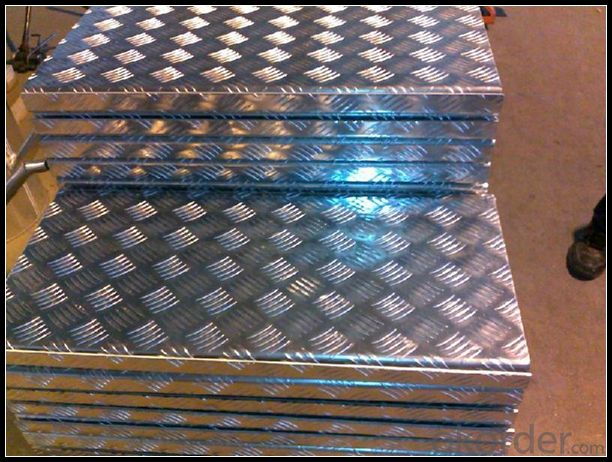
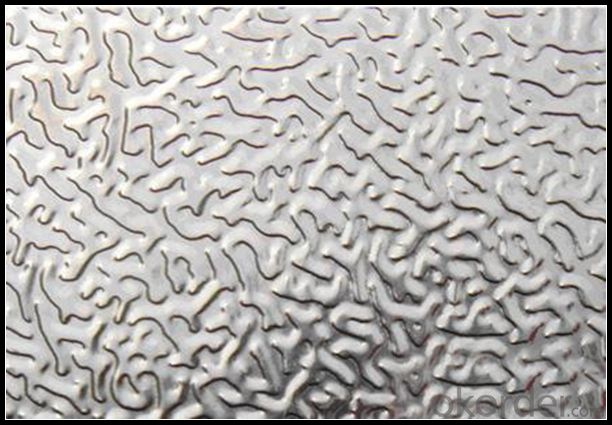
7. Package and shipping of EN AW - 3003 Aluminium Sheet for Circle
First, plastic cloth with drying agent inside; Second, Pearl Wool ; Third, wooden cases with dry agent , fumigation wooden pallets, aluminum surface could cover blue PVC film
8. FAQ
1) What is the delivery time?
Depends on actual order, around 20 to 35 days
2) What is the QC system:
We have QC staff of 20 persons and advanced equipment, each production is with MTC traced from Aluminum ingot lot.
3) What market do you mainly sell to?
Australia, America, Asia, Middle East, Western Europe, Africa etc
- Q: Can 101 aluminum sheets be used in the production of decorative panels?
- Yes, 101 aluminum sheets can be used in the production of decorative panels.
- Q: For my chem class that I just barely started taking, we're making bohr models. Even though my teacher explained it, I still dont get the concept of it all, like how the protons are lined up in their inner circle and the outer circles. I get everythign else about atoms except how they're actually made up lol. Maybe someone on here can explain it to me? I hope so because i have to make a model for it for friday.The element I'm asigned is aluminum btwYour help is greatly appreciated!
- This Site Might Help You. RE: Bohr Model?! Aluminum? For my chem class that I just barely started taking, we're making bohr models. Even though my teacher explained it, I still dont get the concept of it all, like how the protons are lined up in their inner circle and the outer circles. I get everythign else about atoms except how they're...
- Q: What are the rules or laws concerning the application of flame-retardant coatings on aluminum sheets?
- <p>Yes, there are regulations regarding the use of flame-retardant coatings on aluminum sheets. These regulations vary by country and application, but they generally aim to ensure safety and compliance with fire safety standards. In the United States, for example, the National Fire Protection Association (NFPA) provides guidelines, and building codes like the International Building Code (IBC) may specify requirements for flame retardancy. The European Union has its own set of standards, such as EN 13501, which classifies the reaction to fire performance of construction products. Compliance with these regulations is crucial to ensure that the aluminum sheets and their coatings meet the necessary safety standards and to avoid legal penalties.</p>
- Q: What is the coefficient of expansion for aluminum sheets?
- The coefficient of expansion for aluminum sheets is approximately 0.000022 per degree Celsius. This means that for every degree Celsius increase in temperature, the aluminum sheet will expand by 0.000022 times its original length. This coefficient of expansion is important to consider in applications where the aluminum sheets may be exposed to varying temperatures, as it can affect the overall dimensions and stability of the material.
- Q: Can aluminum sheets be anodized for aesthetic purposes?
- Yes, aluminum sheets can be anodized for aesthetic purposes. Anodizing is a process that creates a protective oxide layer on the surface of aluminum, which can be further enhanced with various colors and finishes for aesthetic appeal.
- Q: As for cast aluminum sheet or wrought one, which one has faster heat conduction?
- 1,duralumin: it's the alloy of aluminum, copper, magnesium, manganese and other metals. it's suitable for compacting by rolling, and it has a higher strength and hardness than common aluminum products. 2, aluminum: it contains many inpurities, is crisp and easy to be smashed.cast aluminum usually is secondary aluminum, and it is produced by remelting the collected old aluminum pots and spoons.3, wrought aluminum: it contains 98% aluminum and 2% or more inpurities, and is comparatively pure aluminum. its soft priority makes it suitable for being pressed into various shapes, aluminum pots,aluminum lunch box,aluminum sheets,aluminum wires,aluminum pipes are all made by wrought aluminum.you will know their defferences from their definition.
- Q: Is it possible to use aluminum sheets for roofing purposes?
- <p>Yes, aluminum sheets can be used as roofing materials. They are known for their durability, lightweight, and resistance to corrosion. Aluminum is also recyclable and can be coated with various finishes to enhance its appearance and performance. It is a popular choice for both residential and commercial roofing due to its low maintenance requirements and long lifespan.</p>
- Q: What are the different methods of surface etching aluminum sheets?
- Aluminum sheets can be surface etched using various methods, each with its own benefits and specific uses. Some commonly employed techniques are chemical etching, laser etching, and mechanical etching. Chemical etching entails the selective removal of the aluminum sheet's surface using a chemical solution. This method allows for precise and intricate designs or patterns. It finds application in decorative purposes like creating logos or artwork on aluminum signage or nameplates. Additionally, chemical etching aids in functional enhancements, such as improving paint or coating adhesion. Contrarily, laser etching involves employing a high-powered laser to eliminate material from the aluminum sheet's surface. This technique offers exceptional precision, enabling the creation of fine details. It is frequently utilized for marking or engraving aluminum sheets, such as for serial numbers, barcodes, or product identification. Laser etching is also a non-contact process, ensuring no physical harm to the sheet. Mechanical etching, also known as abrasive blasting, employs an abrasive material to physically eliminate the aluminum sheet's surface. This technique is typically utilized for larger-scale applications, like achieving a textured or matte finish on aluminum panels or sheets. Mechanical etching can also remove surface imperfections or contaminants, preparing the aluminum sheet for subsequent processing or finishing. In conclusion, surface etching of aluminum sheets can be accomplished through chemical etching, laser etching, or mechanical etching. Each method provides distinct advantages and serves specific purposes, ranging from decorative designs to functional markings or surface treatments.
- Q: Can aluminum sheets be anodized without affecting their dimensions?
- Yes, aluminum sheets can be anodized without significantly affecting their dimensions. Anodizing is an electrochemical process that forms a protective oxide layer on the surface of aluminum, which improves its corrosion resistance and durability. The anodizing process involves immersing the aluminum sheet in an acid bath and passing an electric current through it. This causes the aluminum to oxidize, creating a layer of aluminum oxide on the surface. During the anodizing process, the aluminum oxide layer grows inward into the metal, while also building up on the surface. The growth of the oxide layer is controlled by the duration of the anodizing process, and it can be precisely controlled to achieve the desired thickness. Therefore, the dimensional changes caused by anodizing are minimal and can be easily accounted for in the design phase. However, it is important to note that anodizing can cause a slight increase in the thickness of the aluminum sheet. This is due to the growth of the oxide layer on the surface. Typically, the increase in thickness is around 50% of the overall oxide layer thickness. For example, if the desired oxide layer thickness is 10 micrometers, the overall increase in sheet thickness would be approximately 5 micrometers. In summary, while anodizing aluminum sheets can cause a slight increase in thickness, the dimensional changes are minimal and can be accurately predicted and accounted for in the design phase. Anodizing is a popular and effective method for enhancing the properties of aluminum sheets without significantly affecting their dimensions.
- Q: Are aluminum sheets suitable for HVAC applications?
- Yes, aluminum sheets are suitable for HVAC applications. Aluminum is a lightweight, durable, and corrosion-resistant material, making it ideal for use in heating, ventilation, and air conditioning systems. It offers excellent thermal conductivity, allowing for efficient heat transfer, and can be easily formed and fabricated to meet specific requirements in HVAC installations. Additionally, aluminum is also environmentally friendly as it can be recycled, making it a sustainable choice for HVAC applications.
Send your message to us
30 X 37 Aluminum Sheets for Sale - EN AW-3105 Aluminium Treadplate for Building
- Loading Port:
- Shanghai
- Payment Terms:
- TT OR LC
- Min Order Qty:
- 5 m.t.
- Supply Capability:
- 1000 m.t./month
OKorder Service Pledge
OKorder Financial Service
Similar products
Hot products
Hot Searches
Related keywords
